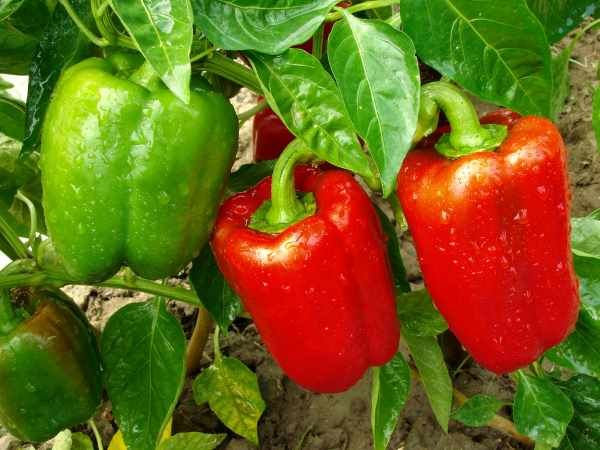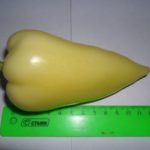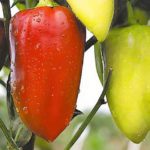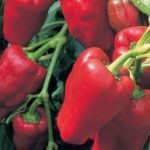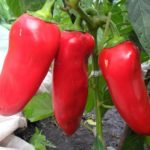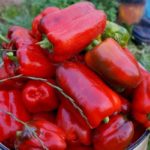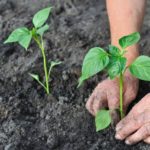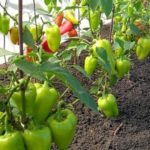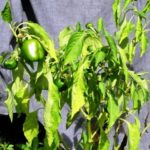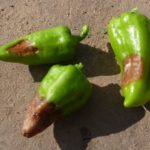"Sweet" is the name Bulgarian people call pepper. And it is a juicy, meaty, colorful, fragrant and healthy vegetable. It contains few calories and many vitamins, such as A, C, E, PP, B9, H, as well as carbohydrates, fiber and proteins. With proper care growing seedlings of Bulgarian pepper is not difficult.
What kind of harm or benefit brings a vegetable, useful properties and contraindications - it is necessary to know only when it will be possible to grow and get a good harvest.
Table of contents
Proper cultivation of bell peppers
Growing a plant is quite laborious. This is culture thermophilic and demanding on the composition and structure of the soil.
Peppers love the soil with neutral acidity and high moisture capacity. The land should be fertilized with manure or ammonium-potassium fertilizers clean of weeds, you need to take care of it in advance.
The ripening of the fruits of this culture is long, therefore planting seeds is carried out in pots at home. Planting and planting seeds immediately in open ground because of this feature does not make sense.
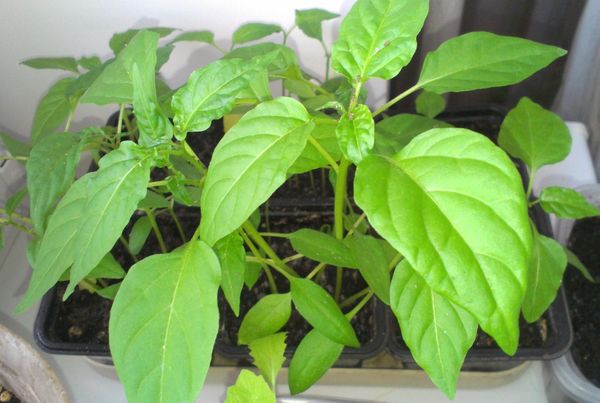
In the northern areas preferably cultivated in greenhousesbecause the necessary temperature regime is observed here around the clock so that the vegetable can grow well.
Sweet Peppers - Popular Types
There are many varieties of sweet vegetables. By planting type plant subdivided into greenhouse and grown in open groundand also divide by maturity of fruits into early ripe, medium early, and later a hybrid.
The most popular variety for open ground is very beloved novice gardeners "Lumina", As unpretentious in the care, resistant to numerous diseases and fruits early. Sort "Ivanhoe"Also early ripe, it has low bushes, therefore, it does not require pinching and garter stalks.
- Lumina
- Ivanhoe
Bulgarian pepper "Funtik»Ripens by 110 days from the date of planting seeds, compact, well resists verticelezu and it can be grown, both in the open and in the protected ground.
Of the mid-season beginners in vegetable farming suitable disease-resistant variety "Ox ear“, The harvest from small bushes is obtained for 130 days, with a little effort on watering and feeding.
Of the hybrids, gardeners emit a red high-yielding variety "California Miracle F1", Requiring minimum labor and large-fruited hybrid"Atlantic F1", Giving a harvest even in adverse weather conditions.
- Funtik
- Ox ear
- California miracle
Where does the landing at home
Peppers are planted on seedlings in February or March depending on location and weather conditions. The first step of planting is to check the seeds by selection in salt water (30 grams of salt per liter).
After drying, the seeds are soaked for several hours in plain water, then placed in a moist environment, such as a wet napkin or a plastic bag before germination.
Also, to speed up the ripening of fruits and prevent diseases, seeds should be treated with a disinfectant solution of potassium permanganate and then a growth stimulator. Since the culture does not like transplants, the seeds are immediately better placed in large 500-gram plastic cups, in loose, moist soil to a depth of 1-2 cm, 2 pieces per cell.
When several shoots appear, the weak one is removed. The cups with the seedlings are placed in a bright and warm place, they are regularly moistened and heated if necessary.
Transplanting seedlings and planting dates in the soil
On the stage 3-4 leaves Pepper transplanted into the open ground. For planting, the land should heat up to +15 degrees.Planting seedlings occurs in May, after the end of frost.
Before planting, ground the ground, spill, and fertilize with 1 tablespoon of potassium. The distance between the bushes is left equal 30 cm.
The level of the planted sprout should correspond to the depth of the seedling material.
Care after planting for a good harvest.
When properly seated, the first new leaf appears in about on day 10. If a plant has many leaves and stems, then a crown is formed by pinching, and each stem is tied to a peg. The main thing during flowering to remove the first flower, it will increase flowering, pollination and fruiting in the future.
- Transplantation into the ground is made after the appearance of 3-4 leaves
- Each bush must be tied to a peg
During the growth period, it is necessary to mulch the soil under the pepper, weeding the weeds in order to ensure oxygen access to the roots of the plant. Water 1-2 times a weekDepending on the weather, water consumption per bush is 1.5 liters for transplanted seedlings, and 2.5 liters for fruiting bushes.
During flowering and another 2 times during the fruiting period, fertilizing is carried out with a solution of manure (1: 5) or chicken manure (1:10), as well as with mineral fertilizers.
Bulgarian pepper does not like cooltherefore, when the air temperature drops, it is necessary to cover it with a film, a rag, and smoke it during the frost period.
Pest and disease control
Pepper often fades in the open field. The reason for this disease and insects that feed on vegetables.
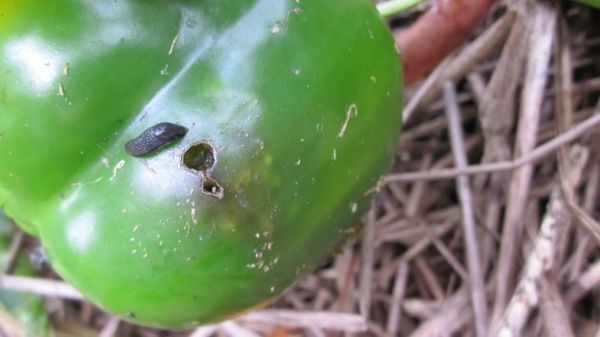
Damage to the plant cause:
- Colorado beetle; Spread the beetle can be avoided by collecting the larvae and destroy
- aphid; exterminated by chemical exposure
- bare slugswho are afraid of dry mustard, tobacco or lime dust
- spider mite loves the juice of the leaves, so the affected plants are burned, and the untouched are sprayed with an alcohol solution, soapy water, garlic or onion extract.
Diseases also often affect peppers:
- a fungal disease in a wet environment, acting on the stems and leaves in the form of brown spots with a pale green area late blight; save pepper can 1% solution of Bordeaux mixture
- the most common is verticillary wilting, which appears due to the penetration of the virus into the damaged roots, the leaves fall off and eventually the plant dries out.It is necessary to burn the sick parts to stop the spread of the fungus.
- among diseases distinguish white, gray and top rot. White appears on the stems in the root part due to a lack of fertilizers, gray appears against the background of irregular water balance and affects the whole fruit, and the apical often affects the tip of the pepper with spots and occurs both from bacteria and planting conditions. To avoid the effects of rot, plantings are fertilized with calcium and plentifully watered.
- Late blight
- Vertex Rot
The difficulties of growing bell peppers
You also need to know that fertilizer is the main part of nutrition, the lack of vitamins immediately affects the appearance of leaves, stems and fruits. When planting seedlings is important to try avoid windy areas, plant a bed of tall, wind-shielding crops.
Carefully choose the "neighbors" for culture: unfavorable neighborhood with fennel, beets, and tomatoes, lettuce, onions, carrots will have a positive impact, scaring off pests.
After the end of the summer season, plant barley in the place of pepper and dig the ground after the grown grass, get rich in vitamins humus, necessary for growing the next season's crop.
Pepper is a southern plant, and in our climate, requiring attentive attitude. Abundant watering, the creation of a plant-friendly soil and protection from the cold contribute to obtaining a deservedly high yield. And this means that with vitamins and macronutrients of sweet bell pepper, ensure yourself until next year!
